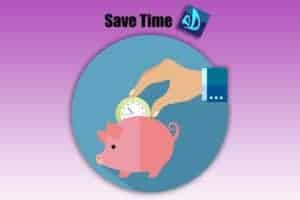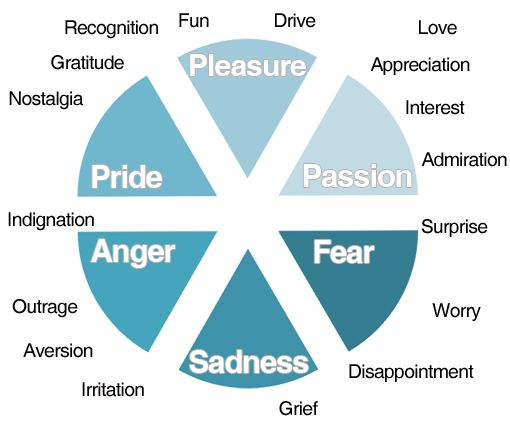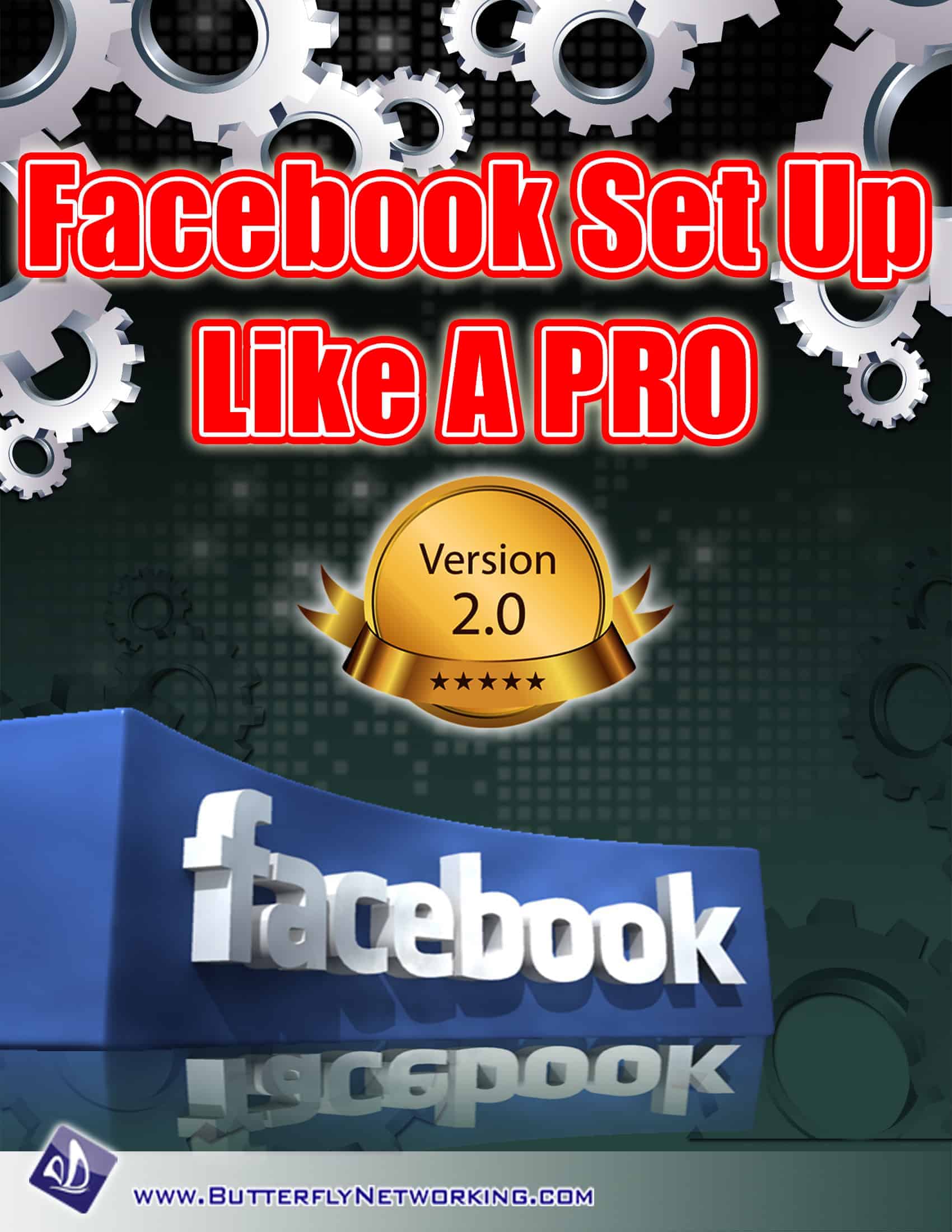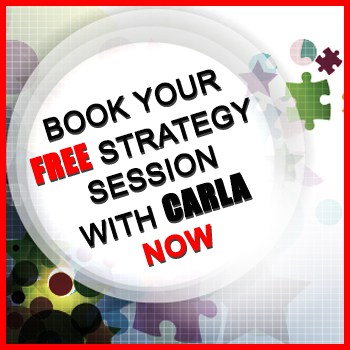Archive for Content Creation
An AI Text Generator will Revolutionize Your Content Marketing
Posted by: | CommentsAn AI Text Generator will Revolutionize Your Content Marketing
An AI Text Generator will Revolutionize Your Content Marketing
Content marketing was an obscure term that I stumbled upon while reading the book “The New Rules of Marketing and PR” by David Meerman-Scott in 2008. It revealed a new creative digital marketing tactic that turned my old ideas of lead generation on its head.
Instead of chasing customers (outbound marketing) they would chase you if you created online content that solved their problems and informed them (inbound marketing).
Nowadays, the term “inbound marketing” is a common phrase in the digital marketing world and has given rise to a whole industry known as “content marketing”.
As a salesperson that had done the hard yards, it was a revelation. Now we can attract leads and sales rather than chase them.
But the game is about to change again as A.I. text generators change the rules of engagement.
Content Marketing has entered a new phase with AI text generators
The emergence of AI text generators is poised to disrupt traditional practices and paradigms. To understand the significance of this shift, it’s worth noting that we’ve already gone through three phases of content creation.
In the past, content creation involved laborious research and poring over books and other sources to extract insights. However, this process is on the brink of being upended by the advent of AI-powered content creation.
The librarians are not happy.
Phase one: Analog content
Writing content in the past involved researching for information in libraries and weaving your ideas and creativity into the mix. It was slow and laborious and involved paper stuffed between book covers and waiting for the borrowed book you were seeking to be returned a week later.
When I started using the Internet and the Netscape browser in 1994 my first thought was “I no longer need to go to the library”. But the interface and search function was clunky and messy. Often I didn’t find anything useful until page 20! Also the crackling beeping modem was so slow that waiting for it to download a web page involved making a coffee and coming back a few minutes later. And the information was ugly.
But despite the frustration it was a game changer. It was the wild west of the Internet; built for humans rather than geeks. I was in love.
Phase two: Digital content
Google’s emergence in the late 1990’s (enabled by the internet) allowed us global access to humanity’s superconscious that was made usable, faster and friendly.
We now had a connected digital world brain that was searchable and made sense. Their mission was to “Organize the world’s information and make it universally accessible and useful”. And they delivered on that promise.
This has been our content playpen for just over 20 years. Phase three made its presence felt on November 30, 2022.
Phase three: Artificial intelligence text generators
A.I. has been the plaything of white coated scientists that created scientific theory and delivered crap. But generative artificial intelligence is now real. And the text format and delivery platform of that tech is ChatGPT.
ChatGPT is powered by A.I. and now provides content marketing professionals and writers with a powerful tool to make them more productive and creative.
A.I. has been given a friendly face (a user interface on the platform ChatGPT) for creating content rather than just links to websites.
The result?
We now have an application that is “Google on steroids”. Content marketing has been supercharged by artificial intelligence.
We are at the tipping point of “Content marketing 2.0”.
How can we use A.I text generators to amplify our content marketing?
Most writers use search results to find information and verifiable resources. Then you need to add that to your content and link. But an AI text generator can write almost all of it for you.
Optimized and accelerated
ChatGPT can write a 700 word article in less than a minute. Then you simply optimize and verify. Currently it doesn’t provide links but Bing’s new search engine is proposing to blend the two.
AI-driven content marketing strategies can help businesses improve their content creation and curation processes, personalize content for their audience, and optimize their content for search engines.
Here are some AI-driven content marketing strategies to consider:
Personalization
AI can help businesses create personalized content for their audience by analyzing data about their preferences, behaviors, and interests. By using AI-powered recommendation engines, businesses can deliver content that is more relevant and engaging to their audience.
Automated content creation
AI can also be used to generate content automatically. This can include using chatbots to create content for FAQs, or using natural language processing (NLP) to generate articles, social media posts, and other content.
Content optimization
AI can help businesses optimize their content for search engines by analyzing keywords, analyzing the performance of similar content, and suggesting improvements to optimize for specific search queries.
Predictive analytics
AI-powered predictive analytics tools can help businesses forecast trends and identify patterns in user behavior, which can help them create content that resonates with their audience and drives engagement.
Visual content creation
AI can also be used to create visual content such as images, videos, and infographics. AI-powered tools can analyze the content, identify relevant visual elements, and create customized visuals that are optimized for social media and other platforms.
Content curation
AI can help businesses curate content that is relevant to their audience by analyzing data about their interests and preferences, and identify relevant content from other sources.
A caveat when using an AI text generator
Just blindly using ChatGPT‘s AI text generator will make your writing look bland and boring.
It’s not a perfect solution or every content marketing writer’s wet dream. Because it doesn’t have a human writer’s “voice”, it lacks personality and is a bit robotic.
Strange about that.
Also it doesn’t understand the nuance of writing rhythm.
It’s free (at the moment), new and raw.
But it is the future.
A.I. text generators also need to be optimized with the technicalities of SEO. These include headlines, URL’s that Google loves, keyword density, hierarchical topics and much more.
But by implementing AI-driven content marketing strategies, businesses can improve the quality and relevance of their content, personalize their marketing efforts, and optimize their content for search engines, all of which can drive engagement and conversions.
via An AI Text Generator will Revolutionize Your Content Marketing
5 Smart Ways to Use Metaphors to Create Irresistible Content
Posted by: | CommentsHow to Use Metaphors to Create Irresistible Content
Hopefully I’ve sold you on the benefits of using metaphors when creating compelling content, and you know the differences between metaphors, similes, and analogies.
Now let’s take a look at five examples of how you can use metaphorical expressions to spice up your writing.
Metaphors can turbo-charge just about any element of an article, from the title down to the close. You might even design an entire piece of content around an ongoing metaphorical theme.
1. Headlines
Imagine yourself blazing quickly through your news app or email inbox.
Article titles and subject lines whiz by in a blur of mundane language, until you hit a heading that stops you dead in your tracks and plants a visual in your brain that prompts you to investigate further.
That’s the power of metaphor in a headline.
For examples of titles that employ both metaphor and descriptive beneficial copy, one only has to look at best-selling business books:
- Purple Cow: Transform Your Business by Being Remarkable
- Duct Tape Marketing: The World’s Most Practical Small Business Marketing Guide
- Blue Ocean Strategy: How to Create Uncontested Market Space and Make Competition Irrelevant
2. Openings
Perhaps you avoided metaphor in your headline, but want to open strong by creating an engaging visual representation in the reader’s mind. Use a metaphor to suck people into the body of your content.
Here’s an example from Anne Miller’s Metaphorically Selling that begins an examination of the dot com bust and resulting economic downturn:
“In Arizona there’s an old graveyard known as Boot Hill where lots of slow-on-the-draw gunslingers are buried. One of the headstones reads ‘I knew this was going to happen, but not so soon.’
“The same could be said about the U.S. economy, which has gone through a wrenching contraction. I don’t know anyone who thought the hyperbole of 2000 could last, but no one thought things would drop as fast as they did.”
3. Themes
One might even make an entire post metaphorically themed, from the headline through the close.
In Stefanie’s post, How to Write 16 Knockout Articles When You Only Have One Wimpy Idea, she uses multiple metaphors to compare creating winning content over time to training to be a boxing champ.
You can see how a theme was created around a simile in Weak Email Marketing and Nickelback Have Less in Common than You Might Think.
4. Proof
You know that you should back up your beneficial promises and assertions with hard data and specific facts when attempting to persuade.
Nothing speaks louder than the numbers, and yet the full force and effect of those numbers is often lost on the reader. Metaphors make the numbers relevant, concrete, and memorable.
- How much is a trillion dollars? It’s a stack of thousand dollar bills 67 miles high. (Ronald Reagan’s early 1980s illustration of the national debt — that stack is significantly higher today.)
- We lose one acre of rainforest every second. Imagine a giant invader from space, clomping across the rainforests of the world with football-field-size feet — going boom, boom, boom every second — would we react? That’s essentially what’s going on right now. (Al Gore’s vivid characterization of rainforest loss.)
5. Closers
Metaphors make for great closers because, when well constructed, they provide powerful summaries and clear recommendations.
via 5 Smart Ways to Use Metaphors to Create Irresistible Content
Content Marketing: it’s All About Targeting
Posted by: | CommentsHow to Curate Quality Content For Facebook Page
Posted by: | CommentsAre you challenged with finding quality content for Facebook page? First lets figure out just exactly how much content you will need to find, create and or curate. Then I’ll show you my tips and tricks. 🙂

How often should you post content for Facebook page?
Statistics have shown us over and over again that no matter the size of your page content needs to be posted on a consistent basis. The size of your page is important but if your under 10,000 aim for one post per day. Afternoons are usually best but again it depends upon the location of your audience. If you have fans from many different time zones, post at different times for a while then check your stats and uncover when you receive the most activity on your page.
How to discover content for your page
So now we know we need to aim for one per day where on earth do we find all that content.
One of the first places I look is to the experts in my niche. For that I start with Google. I go to Google and type in experts in “my niche” and see what comes up, in this example I searched for experts in dog health. Don’t just limit yourself to what is on page one of your search, take a peek further down, even page 5 through 10 will likely provide a great resource.

Depending on your niche another great source is magazines. Take a look at what comes up when I look for “home decor magazines”. There are 1,000’s of magazines in just about every niche you can imagine, look for your! 🙂

Once I find a dozen or so of sites that I like I go to a website called SimilarSites and see what they can find for me. Often I have found some real gems using this strategy. Do your best to find another dozen sites.
Evaluate the sites you have found
This step is critical! We all want quality content on our Facebook pages. Content that keeps people coming back again and again. Four of the criteria I use to select content from other sites;
- Information is generic to my audience
- Site is free from excessive ads
- Quality content is posted on a regular basis
- Has good quality pictures
You will need to read all the different posts in order to make that informed decision; Will this work on my page? Create a list of criteria you can follow, this will ensure the consistent quality of your content. Keep a running list of links to great articles you believe your audience will appreciate. Personally I have both Word docs and text files full of potential content.
Now that you have a list of content you want to post on your Facebook page it’s time to schedule them. I recommend posting one full week at a time, 7 posts.
Time to Post all that Content for Facebook Page
- Pull up your document full of great links
- Go to your Facebook Page
- Copy paste the URL into a regular Facebook post box, let the link auto populate.

- Once the link has populated, you can tell it is populated when the picture and title appear, then delete the link. The information will stay and you can add your own comment, question or observation.
Use Keywords as Hashtags
Within Facebook keywords are known as interests. Be sure to add the appropriate hastags to your posts.
- Your Facebook Insights on your Page
- Audience Insights in the Facebook Ads area
- Suggested Keywords (in Detailed Targeting)
Click the down arrow at the bottom of the post window in order to schedule your post.

![]()
Repeat the process until you have your week’s worth of posts scheduled.
Occasionally you will find posts that you really want to share, but they don’t have a picture or graphic. In these cases you find a graphic, free or from one of the many sites where you can purchase great graphics. Next is to create the new post.
- Add your graphic
- Add the link to the content, let it populate
- Remove the link
- Add your comments to the post
You may want to check out my previous post-Startling Benefits of Facebook Page Quality Content Curation
If you have a blog you can take 2 or 3 of the links you have shared on Facebook and add them into one blog post. It’s a great way to leverage all the work you have done on your Facebook page.
Need help getting all this done, we’re here to help with a 50% off Special content for Facebook Page.
Startling Benefits of Facebook Page Quality Content Curation
Posted by: | CommentsContent is the currency of social media and the entire web. It’s one of the major reasons people go to the web; to look things up! Quality content curation can be a lifesaver when you do not have a ton of your own content.
Content curation is the little-known shortcut that lets you catch up and maybe even pass your competition. You can also position yourself as an expert.
So what exactly is content curation? The process of gathering articles, blog posts, research, information, etc relevant to a particular topic or area of interest.
Easy To Do
 Find content you believe would be of value to your readers and share it. Most websites today make it very easy to share their content, it can be as easy as clicking a share button on their website. The challenging piece here is you have to know your subject well in order to weed out the fluff. If you are knowledgeable in keyword research it can be even easier as you would know the specific phrases and subjects to search.
Find content you believe would be of value to your readers and share it. Most websites today make it very easy to share their content, it can be as easy as clicking a share button on their website. The challenging piece here is you have to know your subject well in order to weed out the fluff. If you are knowledgeable in keyword research it can be even easier as you would know the specific phrases and subjects to search.
Once you find these great posts, articles, stories, etc add your thoughts, insight, this is where your value comes into play. This is the secret sauce, where you can make a difference because to your audience your opinion counts. When you add an article to Facebook it can be as simple as asking a question. EXAMPLE: I recently added an SEO post, I identified one task I wish I had implemented when I first started and one task I was not doing but because it was such a good idea I was going to implement immediately.
Content Curation Engages Your Audience
Everyone who comes to any of your online content, be it a blog or any social media profile may not ready to buy from you immediately. It is in our best interest as business owners to nurture relationships. This means we have to provide valuable content that keeps them coming back again and again. I don’t know about you but creating my own content takes time and I have other tasks that prevent me from writing a post every day.
This is one of the main reasons I love content curation is that I can provide information I know my audience is interested in, can use and implement in their business.
Be sure to curate content from a variety of different sources, introduce new sources of information. If you only share from 3 or 4 sources every week your audience will likely lose interest. Quality content curation allows you to be that trusted source, by doing the “legwork” for your audience.
Quality Content Curation Establishes Authority
Your email list becomes more powerful when your connections know you provide valuable content. The ability to give the content away on a continuous basis is key.
When you discover the little known or up and coming experts in your niche, share their insights and perspectives you are providing your audience with a broad panorama of what is available.
You wade through the quagmire of rehashed content to find powerful tidbits to bring back to your followers. Filter out the noise and link to valuable content your audience can use instead of rewriting the same old tired information. When you curate content with integrity and honesty – you become that trustworthy resource.
Saves Time
 Like everything else in life when we learn how to do something new it initially takes more time. Quality content curation is the same. You will definitely save time for your audience right from the start. They will not have to plow through everything as you have already done it for them. As you are learning and setting up your “trusted sources” you want to make sure that you save them in a safe place.
Like everything else in life when we learn how to do something new it initially takes more time. Quality content curation is the same. You will definitely save time for your audience right from the start. They will not have to plow through everything as you have already done it for them. As you are learning and setting up your “trusted sources” you want to make sure that you save them in a safe place.
It’s frustrating when you know you discovered this great blog that had great content and now you can’t find it. Initially, I just kept a list in a Word doc. Then I upgraded to a special bookmark folder. Both of these methods worked well for a while but they didn’t save me a lot of time. If you decide quality content curation is for you, you may want to invest in a content curation program, there are tons out there, personally, I use Kudani.
Identify Valuable Resources
This can be the most interesting part for you! Here is where you will definitely “wade through the quagmire” because that is what it will take to find abstractly  relevant content. When you post/share the “same old – same old” on a consistent basis you will become stale to your audience. As you read blog posts in your niche be sure to click on the links embedded in the posts on a regular basis just to see where they take you. In my experience, this is one of the great methods to find the abstractly relevant content.
relevant content. When you post/share the “same old – same old” on a consistent basis you will become stale to your audience. As you read blog posts in your niche be sure to click on the links embedded in the posts on a regular basis just to see where they take you. In my experience, this is one of the great methods to find the abstractly relevant content.
EXAMPLE: During the research for another blog post I discovered a list of the up and coming social media experts. From that list I took a look at a number of them, starting at the bottom and only names I didn’t recognize. The links to the experts were for their Twitter feeds, I scrolled through a number of feeds. It was awesome to be going down the rabbit hole with purpose. 🙂 As a result, I discovered a new blog with content that is definitely worth sharing. Why Inconsistent Messaging Is Undermining Customer Experience
The other method I use to find the abstractly relevant is all of the sources I check to create each and every one of my blog posts. I keep a list of everything I looked at and read. When required I can then go back and review when I need something that is relevant to that specific topic. All of this valuable information is saved in a folder called “Blog Post Outlines”.
Content curation can be easily implemented check out my previous blog post Content Curation Made Easy, Look Like The Expert














